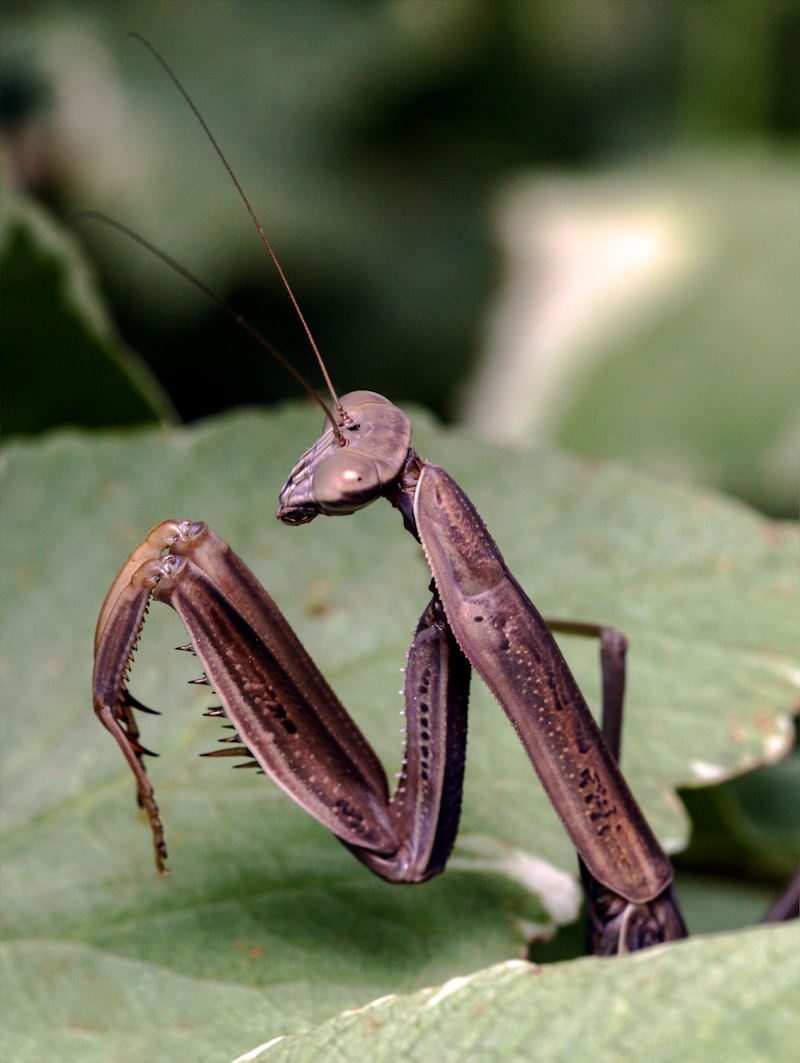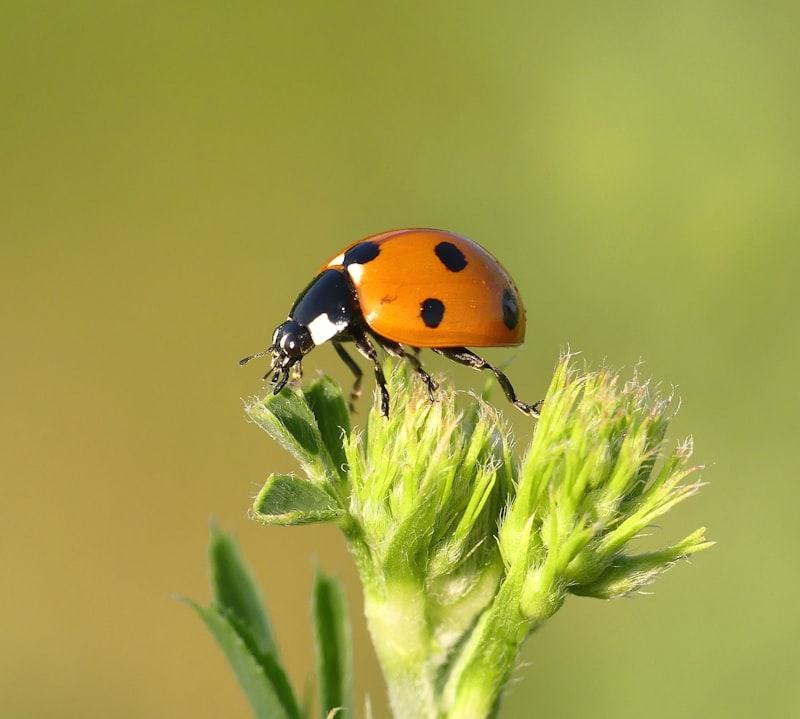Take, for instance, the parasitoid wasp. Its life cycle is a testament to precision and efficiency. Upon finding a suitable host—a caterpillar or a beetle larvae—the female wasp deposits her eggs inside the host’s body. As the eggs hatch, the larvae consume the host from within, carefully avoiding vital organs until they reach maturity. This intricate dance between predator and prey ensures the survival of the wasp’s offspring while controlling potential pest populations in the environment.
Contrastingly, blood-sucking ticks demonstrate a different facet of parasitism. These arachnids rely on a steady supply of blood for their survival and reproduction. Using specialized mouthparts, they latch onto their host—be it a mammal, bird, or reptile—and feed until engorged. Their ability to detect hosts from a distance and their resilience in harsh conditions make them formidable survivors in diverse habitats worldwide.
What truly captivates about the behavioral ecology of parasitic insects is their adaptability and evolutionary prowess. Each species has honed specific behaviors over millennia, finely tuned to maximize their reproductive success and ensure the continuation of their lineage. From manipulating host behavior to evade immune responses, these insects employ a repertoire of tactics that continue to intrigue scientists and enthusiasts alike.
Exploring the behavioral ecology of parasitic insects unveils a world where survival hinges on intricate adaptations and evolutionary trade-offs. By understanding these dynamics, we gain deeper insights into the delicate balance of nature and the remarkable strategies employed by these often misunderstood creatures.
The Cunning Tactics: How Parasitic Insects Manipulate Host Behavior
These parasites wield a sophisticated arsenal of biochemical weaponry. They inject precise cocktails of chemicals into their hosts, altering neurological pathways and essentially turning the host into a puppet. For instance, the parasitic jewel wasp targets cockroaches, injecting venom directly into the roach’s brain. This venom subdues the roach’s escape reflex and compels it to become passive, allowing the wasp to lead it to a burrow where it becomes a living nursery for its larvae.
Even more astonishing are the hairworms that infest grasshoppers. After growing inside the grasshopper’s body, they orchestrate a grand finale: compelling their host to leap into water. This seemingly suicidal jump is actually a strategic move for the hairworm’s offspring, as they need water to complete their life cycle.
The manipulation isn’t just chemical; it’s behavioral. Take the case of Toxoplasma gondii, a parasite that can infect rats but needs to be eaten by a cat to reproduce. Inside the rat, the parasite alters brain chemistry, making the rat less fearful of cats and even attracted to their scent—a fatal attraction for the rat but a clever maneuver for the parasite.
These examples showcase the intricate dance between parasite and host—a testament to evolution’s strange and often unsettling strategies. Through these tactics, parasites ensure their survival and proliferation, demonstrating nature’s astonishing ability to adapt and exploit even the most intricate biological systems.
Survival Strategies Unveiled: Insights into the Behavioral Ecology of Parasitic Insects
One of the most intriguing strategies employed by parasitic insects involves manipulating the behavior of their hosts. Picture this: a wasp injects its eggs into a caterpillar. Initially unaware of the intrusion, the caterpillar continues its daily activities until the eggs hatch. The larvae then begin their transformation into voracious consumers, strategically avoiding vital organs to keep their host alive as long as possible. This ensures a constant supply of nutrients until they’re ready to emerge fully developed.
But survival isn’t just about feeding. It’s also about finding suitable hosts. Parasitic insects have evolved mechanisms to locate and exploit hosts efficiently. Some use chemical cues emitted by their hosts, honing in on specific signals that indicate a potential meal ticket. Others have finely tuned sensory organs, capable of detecting subtle changes in temperature or humidity that signal the presence of a suitable host nearby.
Adaptability is another key survival trait. Parasitic insects often exhibit a remarkable ability to switch hosts when conditions change. This flexibility ensures their survival even in unpredictable environments where their primary hosts may become scarce or inaccessible.
In essence, the behavioral ecology of parasitic insects reveals a complex interplay of adaptation, manipulation, and survival. By understanding these strategies, scientists gain insights into broader ecological principles and the intricate balance that sustains life in our natural world.
From Manipulation to Survival: The Intricate Dance of Parasitic Insects
Parasitic insects have perfected the art of survival through a complex web of manipulation and adaptation. These tiny creatures, often unseen to the naked eye, wield remarkable strategies to exploit their hosts for sustenance and reproduction.
Imagine a world where survival hinges not on strength or speed, but on cunning manipulation. Parasitic insects have evolved to infiltrate and influence their hosts with astonishing precision. Take the jewel wasp, for instance, known for its chilling strategy of manipulating cockroaches into becoming unwitting nurseries for their larvae. By injecting venom precisely into the cockroach’s brain, the jewel wasp can control its movements, guiding it to a burrow where an egg is laid on the immobilized host. This macabre form of mind control ensures the larva has a ready-made food source upon hatching.
Moreover, parasitic insects often display a remarkable ability to adapt to diverse environments and host species. Fleas, for example, are not only notorious for their irritating bites but also for their ability to leap effortlessly from host to host, ensuring their survival even in the most challenging conditions. Their flattened bodies and strong legs are perfectly adapted for navigating fur or feathers, making them formidable survivors in the animal kingdom.
In this intricate dance between parasite and host, survival is the ultimate goal. Parasitic insects have evolved specialized anatomical features and behaviors tailored to exploit a wide range of hosts. From blood-sucking mouthparts to camouflage that mimics their surroundings, these adaptations ensure their continued existence in ecosystems worldwide.
Adapt or Expire: Evolutionary Dynamics in Parasitic Insect Behavior
In the intricate world of nature, survival hinges not just on strength, but on adaptability. Parasitic insects exemplify this principle through their evolutionary strategies, constantly adapting to ensure their survival and reproduction.
These insects, often small and seemingly insignificant, wield complex behavioral adaptations that maximize their chances of exploiting host organisms. Take the parasitic wasp, for example. It has evolved a precise set of behaviors that allow it to locate, immobilize, and lay eggs inside its host with surgical precision. This behavior isn’t just instinctual; it’s a result of millennia of evolutionary fine-tuning.
Adaptation in parasitic insect behavior isn’t limited to reproductive strategies alone. It extends to camouflage techniques, mimicry, and even biochemical manipulation. Some parasitic beetles, for instance, mimic the scent of their host to evade detection, ensuring their survival within the host’s environment.
The evolutionary arms race between parasitic insects and their hosts is a constant struggle for dominance. As hosts develop defenses, parasites counter with new adaptations. This dance of evolution ensures that only the most adaptable and resilient species thrive in their ecological niches.
Metaphorically, parasitic insect behavior mirrors the adaptability needed in human endeavors. Just as these insects evolve strategies to survive, businesses and individuals must constantly innovate to thrive in competitive landscapes. The lesson from parasitic insects is clear: adaptability isn’t just a survival strategy—it’s the key to long-term success.
Understanding the evolutionary dynamics of parasitic insects offers profound insights into the broader mechanisms of adaptation and survival in nature. It underscores the importance of flexibility and innovation in facing challenges, whether in the wild or in human societies.
This article aims to engage readers by drawing parallels between natural selection in parasitic insects and adaptive strategies in human contexts, using a conversational tone and engaging language to maintain interest throughout.
Mind Control or Mutualism? Deciphering the Strategies of Parasitic Insects
Imagine a world where an insect’s life cycle hinges on its ability to hijack the behavior of another organism. This phenomenon, known as mind control, isn’t confined to science fiction but exists in our own backyard, so to speak, within the realm of parasitic insects. Take the case of the emerald cockroach wasp, a master manipulator that turns a cockroach into a docile living nursery for its young. By injecting precise venom into specific regions of the cockroach’s brain, the wasp induces a state where the roach complies with the wasp’s demands without resistance.
Yet, is this truly mind control or a form of mutualism? Some researchers argue that these interactions, though seemingly one-sided, may benefit both parties. The parasitic wasp ensures the survival of its offspring, while the host gains protection from other predators in return for its unwitting sacrifice. It’s a delicate balance of exploitation and cooperation, where evolutionary pressures shape these bizarre alliances.
From ants manipulated into becoming bodyguards for parasitic fungi to spiders coerced into weaving shelters for wasp larvae, the strategies of parasitic insects continue to astonish scientists and enthusiasts alike. Each adaptation represents millions of years of evolutionary refinement, where survival hinges on mastering the art of persuasion in the insect world.
As we unravel these mysteries, one thing becomes clear: nature’s creativity knows no bounds. Parasitic insects challenge our understanding of relationships, urging us to reconsider our definitions of control and cooperation. In this ongoing exploration, the boundaries between predator and prey blur, revealing the intricate tapestry of life’s interconnectedness.
The Role of Chemical Signaling: Communication in Parasitic Insect Host Selection
In the intricate dance of nature, parasitic insects release chemical signals known as semiochemicals. These signals act as messengers, conveying vital information about the presence and suitability of potential hosts. For instance, certain semiochemicals released by plants can alert parasitic insects to the presence of prey or hosts nearby. This chemical conversation is akin to a complex puzzle where each scent molecule tells a story, guiding the insect towards its next meal or reproductive opportunity.
Consider the process: as a parasitic insect approaches a plant, it detects subtle traces of volatile chemicals emitted by the host. These chemicals, often specific to certain plant species or even individual plants, act as beacons in the air. The insect interprets these chemical cues, assessing whether the host is suitable for its needs based on the scent profile.
Analogously, this chemical signaling can be compared to a sophisticated radar system guiding aircraft through dense fog. Each molecule is like a radar pulse, providing critical information that directs the insect’s behavior. Just as pilots rely on radar to navigate safely, parasitic insects depend on chemical signals to locate their hosts efficiently.
Moreover, the effectiveness of this communication system highlights its evolutionary significance. Over millennia, parasitic insects have developed finely tuned receptors that detect minute quantities of these semiochemicals, demonstrating the remarkable adaptation of nature’s designs.
Host Specificity and Beyond: Navigating the Ecological Interactions of Parasitic Insects

Imagine a world where every species has its own specific role, like pieces of a complex puzzle fitting together perfectly. That’s how host specificity works in the realm of parasitic insects. These tiny creatures, ranging from tiny wasps to imposing bed bugs, have evolved to depend on specific hosts for their survival and reproduction. It’s like each parasite has its favorite restaurant, and it won’t settle for anything less than its preferred menu.
Host specificity isn’t just a preference; it’s a finely tuned adaptation that ensures the parasite can thrive. Take the example of the emerald ash borer, a beetle that exclusively targets ash trees. These beetles have honed their skills over millennia to exploit the unique traits of ash trees, from their bark to their nutrient composition. It’s a specialized relationship where the beetle’s survival hinges on the health of its host.
But what happens when a parasite encounters a new host species? It’s like a foreigner stumbling upon a new culture—it can be a risky adventure. Some parasites, like the infamous malaria-carrying mosquitoes, can adapt to new hosts over time. They may not be as efficient initially, but through trial and error (and natural selection), they can sometimes broaden their menu.

Beyond host specificity lies a web of ecological interactions that shape entire ecosystems. Parasites play roles beyond just weakening their hosts; they can influence population dynamics and even alter the behavior of their hosts. Picture a puppeteer pulling the strings behind the scenes, subtly influencing the actors on stage.
Understanding these interactions isn’t just about academic curiosity. It has practical implications for agriculture, human health, and conservation efforts. For instance, biological control uses parasitic insects to manage pest populations naturally, reducing the need for chemical pesticides and promoting sustainable farming practices.
Frequently Asked Questions
How do parasitic insects locate and select hosts?
This FAQ provides a concise explanation of how parasitic insects find and choose their hosts. It covers the mechanisms such as chemical cues emitted by hosts, visual and thermal signals, and specific adaptations that help these insects locate suitable hosts for feeding or reproduction.
What are the ecological impacts of parasitic insects on host populations?
Explore the ecological impacts of parasitic insects on host populations, revealing insights into population dynamics, species interactions, and ecosystem health. Understand how parasitism influences biodiversity, community structure, and evolutionary processes.
What is behavioral ecology in the context of parasitic insects?
Behavioral ecology in the context of parasitic insects examines how these insects interact with their hosts, focusing on behaviors such as host location, attachment, and manipulation. It explores how ecological factors influence the evolution of these behaviors and their impact on host populations.
How do parasitic insects manipulate host behavior?
Learn how parasitic insects manipulate host behavior by altering neurotransmitter levels or injecting molecules that influence the host’s nervous system. This manipulation benefits the parasite’s survival and reproduction.
What are the adaptive behaviors of parasitic insects during host interactions?
Learn about the adaptive behaviors of parasitic insects when interacting with hosts, including strategies like host selection, camouflage, and manipulation of host behavior to ensure survival and reproduction.



